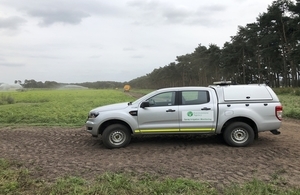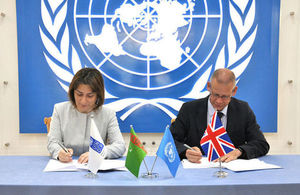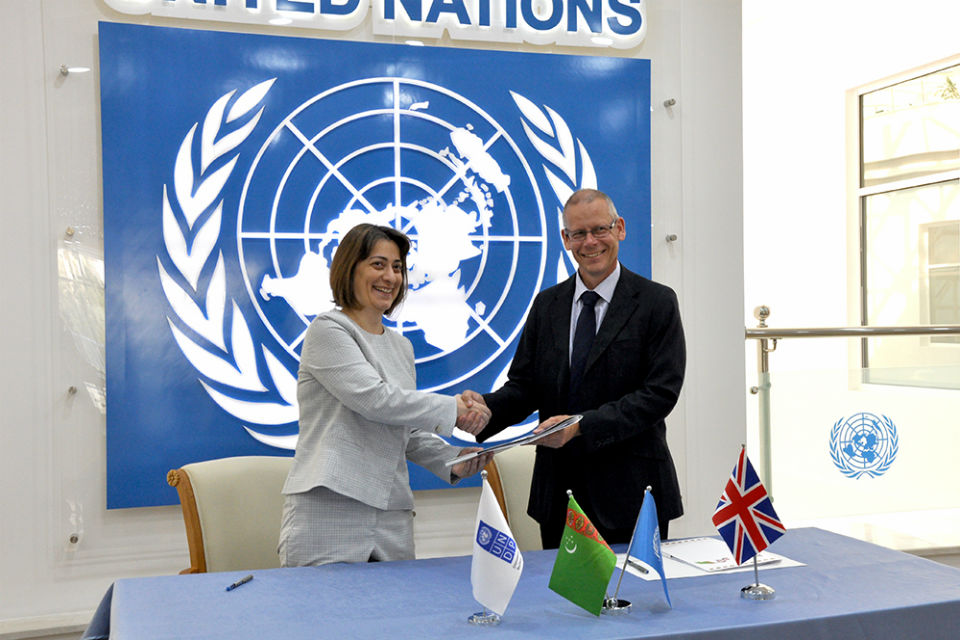National Drought Group – EA Executive Director’s statement
The NDG met on Thursday 25 July, chaired by Harvey Bradshaw, Executive Director of the Environment Agency.
Published 26 July 2019 From: Environment Agency

The NDG met on Thursday 25 July, chaired by Harvey Bradshaw, Executive Director of the Environment Agency, to assess the latest water resource situation and actions being taken to reduce the impact of drought conditions this summer. Harvey Bradshaw noted that the meeting was being held on the hottest day of the year so far.
The National Drought Group (NDG) brings together government departments, water companies, NFU, environmental groups and others to prepare for and mitigate the impacts of dry weather by coordinating action to maintain water supplies and protect the environment.
Current situation
Some parts of England have experienced a lack of rain since winter 2016/2017 which is now causing impacts for agriculture and the environment. Whilst June’s rainfall provided some relief after a very dry spring, it hasn’t replenished low groundwater levels in east and south east England. It could be some time before the water resources situation returns to normal ranges.
The group acknowledged the growing concern over the potential impacts of prolonged dry weather on the environment and the cumulative effect from last year. The National Drought Group urges water users to do all that is needed to sustain water supplies and ease pressure on the environment.
In parts of England, water supply concerns could affect the irrigation of crops this summer. The Environment Agency continues to balance farmers’ needs with those of wildlife and other water users.
Position of the water companies
Despite the lack of full recovery in the water resources position, most water companies have good reservoir storage for the remainder of this year. Further to this water companies set out the actions they are taking including: promoting customer campaigns, leakage reduction and collaborative actions to facilitate access to water for others.
Environment Agency
The Environment Agency confirmed that it will sustain its enhanced activity to ensure water users and the environment get the water they need and is:
-
continuing to actively monitor the weather, water situation and the environment; manage down demand and protect the environment using regulatory powers as necessary.
-
reviewing the groundwater and surface water position to consider if more water could be made available during peak demand by the means of flexible abstraction and rapid trading – wherever this can be done without damaging the environment and ensuring lawful abstraction is maintained.
-
operating compensatory pumping schemes to support low river flows and protect the environment, for example the Gwash to Glenn transfer scheme which releases from Rutland water into south Lincolnshire and Trent-Witham Ancholme transfer scheme which moves water across parts of Lincolnshire.
-
continuing its enforcement activity to ensure abstractors comply with their licences to help minimise the impact on the environment.
-
circulating guidance to fishery managers on how to prepare and respond to incidents.
-
worked with Waterwise on water efficiency guidance for irrigators to use this summer.
-
working with all sectors to prepare resilience plans for autumn/winter should the dry weather continue.
-
encouraging water companies to work with farmers to make more water available.
-
challenged water companies to help protect and reduce the impact on environmentally sensitive water courses like chalk streams.
Agriculture
Despite the rain in June, flows have quickly receded due to the low base flows in rivers and streams resulting from the low groundwater levels in parts of East Anglia. Notice letters have been reissued this month warning of restrictions under Section 57 of the Water Resources Act 1991) on a number of surface water abstractions (watercourses) in some catchments from mid Norfolk (south of the Yare) through Suffolk and Essex from late-July. Section 57 gives the Environment Agency powers for “Emergency variation of licences for spray irrigation purposes” when there has been an exceptional shortage of rainfall or other emergency.
A continuing dry July and early August could mean a large number of abstraction licence controls which curtail the abstraction of water, will be in place in parts of England during the final weeks of the peak irrigation season finishing off crops such as potatoes and carrots. Extension of this dry weather further into the year could cause difficulties for growers trying to lift crops and present another significant demand for water.
The Agriculture and Horticulture Development Board (AHDB) has advice and guidance for farmers and growers on Section 57 Notices and those dealing with extreme weather like drought or heat on their website.
Environment
Whilst the wet June has provided local and temporary respite the number and geographical distribution of incidents and impacts will increase with hot and dry weather. The number of fish and algal incidents in June was similar to 2018. Algal incidents are tracking slightly high, whilst fish incidents are relatively low. The number of fire incidents has plateaued.
The National Drought Group is an example of how the Environment Agency is working to increase resilience in the face of a climate emergency.
Advice to the public
There is enough water for all if water is managed properly and not wasted. Everyone has a role to play in ensuring that this happens. At present the average person in the UK uses 140 litres of water a day: long term water security will require all of us to reduce that figure to 100 litres of water a day.
Conclusions and next steps
The NDG confirmed that there is no threat to essential water supplies. However, a continuation of below average rainfall will prove challenging for farmers and increase environmental stress in areas where groundwater levels are lower than expected at this time of year. We urge everyone to use water wisely to help protect the environment and to conserve water supplies.




